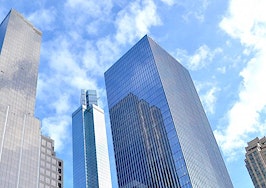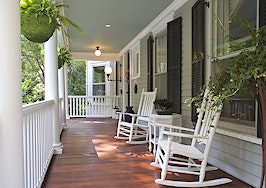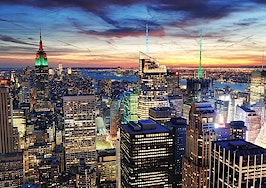- The biggest price hikes were seen in non-doorman two-bedrooms.
- Between December of 2014 and 2015, inventory increased 16 percent across all of Manhattan.
- The neighborhoods to see high inventory growth in Manhattan this past year were Harlem, the Upper East Side, Upper West Side, Midtown East and Midtown West.
- SoHo doormen units and Tribeca non-doormen apartments saw sluggish movement.
As the second-priciest rental market in the nation behind San Francisco, Manhattan’s rent increases in 2015 might not come as a surprise.
According to the MNS Year End Market Report for Manhattan, the biggest price hikes were seen in non-doorman two-bedrooms, up 10.2 percent to $4,309 from $3,911. MNS recognized the shift toward larger units in the Manhattan market, driving more demand and setting prices noticeably higher.
Second to non-doorman two-bedroom units, doorman-operated studios increased by 7.4 percent, up to $3,065 from $2,855 in 2014. Non-doorman one-bedrooms increased 6.6 percent, up to $3,138 from $2,945 in 2014. Doorman-operated two-bedrooms increased 5.5 percent since 2014, followed by non-doorman studios, and then doorman one-bedrooms, up 5.1 percent and 4.7 percent, respectively.
September: the best month for NYC landlords to list?
Although price increases fluctuated depending on unit size, average rent peaked in September at $3,995 and bottomed in February at $3,899. For a market like New York City, where the cold weather can make moving difficult, winter brings slightly lower pricing. Because NYC is already expensive, the difference isn’t as notable as in a market like Chicago, where median rent is much lower.
New units popping up in Harlem
Between December 2014 and 2015, unit inventory increased 16 percent across Manhattan. The biggest jump appeared in units featuring doormen, which rose 17.79 percent, from 4,368 to 5,145 apartments. Standard units without doormen also boosted 14.04 percent, representing solid growth for all of Manhattan’s apartment-class buildings.
Neighborhoods to see high inventory growth in Manhattan in 2015 were Harlem, Upper East Side, Upper West Side, Midtown East and Midtown West. Although more units opened, average prices for both doorman and non-doorman operated complexes rose, with the biggest increases hitting Harlem doorman units. Harlem studios with doormen increased 13.7 percent in price. One-bedrooms also increased 13.81 percent in price, and two-bedrooms went up a whopping 19.88 percent in price.
New, high-end complexes in the East Village — including 1 Union Square South, 211 East 13th St. and 11 East 1 St. — are representative of the demand for larger units boasting amenities. Studios in the neighborhood increased by 2.72 percent, one-bedrooms by 6.84 percent and two-bedrooms by 17.59 percent.
“For the first time in three years, we have smaller units coming to the market. We had a stretch where smaller, affordable units $2,000 PPSF and lower did not exist. With conversions from rental to condo, this has created a smaller unit mix and developers are shifting towards smaller units now,” said Andrew Barrocas, CEO of MNS.
SoHo and Tribeca are lagging behind
On the slower end, SoHo doorman units and Tribeca non-doorman apartments saw sluggish movement. These are also the most expensive neighborhoods in their class, with SoHo doorman units costing $6,213 and Tribeca coming in at $5,505 per month, on average. Low inventory helps keep demand high, analysts say, so rates in sought after neighborhoods including SoHo and TriBeCa likely won’t drop in the near future.
MNS highlighted developments toward larger units for both families and apartment shares across Manhattan. Even so, studio prices pulled strong increases– proving that single-dweller units aren’t dead in NYC. Although the trend seems to be shifting toward more comfortable living with doormen and other amenities, traditional walk-ups aren’t free from Manhattan’s rent inflation, either.









